 Humans
Humans  Humans
Humans  Animals
Animals 10 Animals That Humiliated and Harmed Historical Leaders
 History
History 10 Most Influential Protests in Modern History
 Creepy
Creepy 10 More Representations of Death from Myth, Legend, and Folktale
 Technology
Technology 10 Scientific Breakthroughs of 2025 That’ll Change Everything
 Our World
Our World 10 Ways Icelandic Culture Makes Other Countries Look Boring
 Misconceptions
Misconceptions 10 Common Misconceptions About the Victorian Era
 Mysteries
Mysteries 10 Strange Unexplained Mysteries of 2025
 Miscellaneous
Miscellaneous 10 of History’s Most Bell-Ringing Finishing Moves
 History
History 10 Great Escapes That Ended Right Back in Captivity
 Humans
Humans 10 Everyday Human Behaviors That Are Actually Survival Instincts
 Animals
Animals 10 Animals That Humiliated and Harmed Historical Leaders
 History
History 10 Most Influential Protests in Modern History
Who's Behind Listverse?

Jamie Frater
Head Editor
Jamie founded Listverse due to an insatiable desire to share fascinating, obscure, and bizarre facts. He has been a guest speaker on numerous national radio and television stations and is a five time published author.
More About Us Creepy
Creepy 10 More Representations of Death from Myth, Legend, and Folktale
 Technology
Technology 10 Scientific Breakthroughs of 2025 That’ll Change Everything
 Our World
Our World 10 Ways Icelandic Culture Makes Other Countries Look Boring
 Misconceptions
Misconceptions 10 Common Misconceptions About the Victorian Era
 Mysteries
Mysteries 10 Strange Unexplained Mysteries of 2025
 Miscellaneous
Miscellaneous 10 of History’s Most Bell-Ringing Finishing Moves
 History
History 10 Great Escapes That Ended Right Back in Captivity
10 Countries With Insane Histories That You’ve Never Heard Of
We’ve all heard of the American Civil War and the French Revolution. The Cold War and Cuba are old hat by now, and we’ve seen so much on Iraq and Afghanistan we know them inside out. These parts of history may indeed be pretty crazy, but they’re so well-known they just don’t have the same impact anymore. But do you know about the world’s craziest Central Asian dictators, who spend millions building marble palaces[1] or boil their political opponents to death, depending on which country you look at? Do you even know which countries are in Central Asia? Many of you may not—and that’s what makes finding out about this stuff so interesting, horrific as some of it undoubtedly is.
10 The Gambia
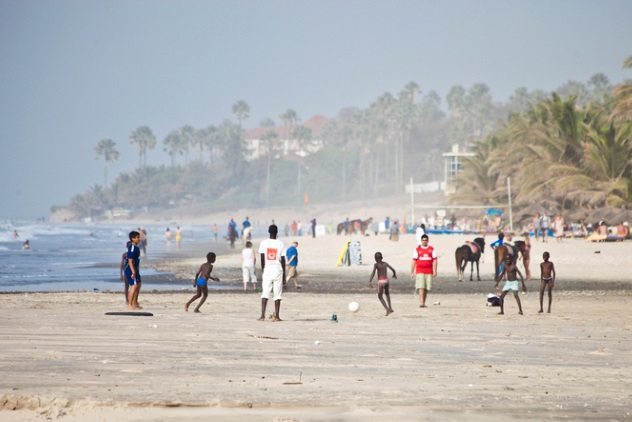
The fact that the first Gambian president was reelected five times and the second ruled for over two decades, for a total of 53 years between them, should tell us volumes about the politics and history of this country.
Dawda Jawara, the country’s first leader, took up his post (initially as prime minister) in 1962, just before Gambian independence from the UK. Jawara was, by all accounts, somewhat better than other African leaders of the era. Corruption in The Gambia was less prevalent than in other neighboring countries; the majority of senior governmental figures led relatively modest lives (at least compared to, say, Gadhafi), and he ostensibly adhered to democratic values. The original Gambian state was not single-party, nor was it authoritarian, and the media was even (quite) free. This was, in fact, all too good to be true—which is why Jawara was the victim of several coup attempts, including one in which foreign armies had to intervene to save him, and was eventually deposed by a military coup in 1994.
Jawara’s replacement, Lieutenant Yahya Jammeh, wasn’t as nice as his predecessor. On taking power, Jammeh’s first acts were to abolish the constitution and ban all political opposition, setting the stage for what was to come. During his rule, Jammeh was involved in a number of admittedly predictable scandals, many of which involved (who would have guessed) human rights breaches. He had a somewhat different solution to many of the problems faced in Europe. Things like student protests, unflattering reporters, and illegal immigration were dealt with by brutally gunning down all those responsible. President Jammeh’s solutions also included his own “herbal cure for AIDS,” the curing of witches by abducting them and making them drink poisonous broth, and, of course, his solution to the “problem” of homosexuality: to declare gay people “vermin” and implement the death penalty for them.[2]
It would be safe to say, then, that for such a small country, The Gambia does, in fact, have remarkably large problems—although the recent replacement of Jammeh (after two decades of dictatorship) by a fairly elected president is a good omen for the future.
9 The Comoros
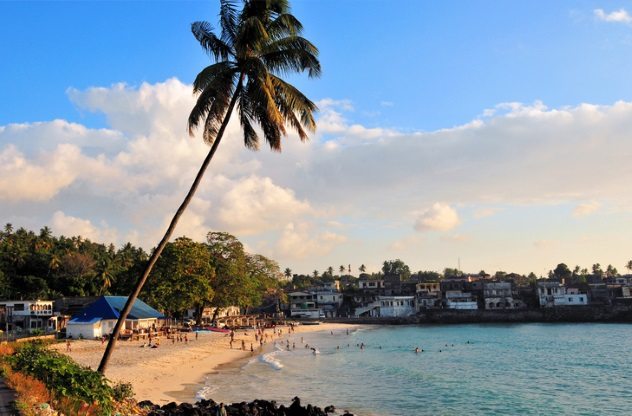
The Comoros may be an island nation that almost nobody’s ever heard of, but so far, that hasn’t stopped it from breaking a number of rather impressive records. The archipelago is one of the most revolution-prone countries in Africa—and indeed the world—with a grand total of 21 throughout its history, a fact that’s even more impressive when you consider that it’s only actually existed for 42 years.[3]
Problems started from the very outset of independence, when it turned out that one of the islands claimed by the Comoros didn’t actually want to join up with them and preferred being ruled by France instead. Since then, the Comoros has experienced a number of rather unique events, such as a Maoist revolution, a president shot dead in his bed by an anti-tank missile, and dictatorships backed by foreign mercenaries.
If one thing is for sure, though, it’s that Comorians have had a hard time deciding who they want to lead them. The islands’ population has supported a wide variety of figures, from Islamists to teenage Marxist militias. Another strange figure in Comorian history is that of Bob Denard, a mercenary who managed to single-handledly topple four of the country’s governments, allegedly on the behalf of France. Denard was de facto head of the Comoros for years, with the leader effectively being whoever he and his mercenaries would back—until 1995, when one coup too many led him to finally be arrested by French authorities.
The country’s problems didn’t end there, though, with things eventually getting so bad that two of its three islands would attempt to secede and rejoin France in 1997, a demand that was refused. Although in 2006, the Comoros did finally manage the first peaceful transfer of power in the 31 years since the country’s independence, an invasion was required only a year later to remove the president of one of the islands who had overstayed his welcome, showing that problems in this chain of islands are sadly not over yet.
8 Mali
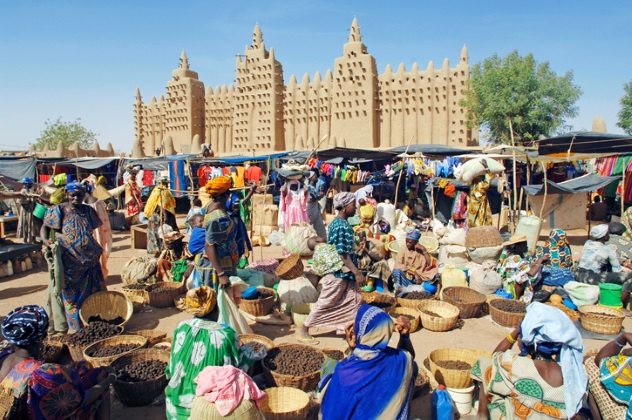
Mali is a beautiful and idyllic African country, filled to the brim with natural resources and fragmented along religious and ethnic lines. If there ever was a prime candidate to become a failed state, it would be Mali. It is no surprise then, perhaps, that half a century on from independence, this nation has not been as successful as some had hoped.
Mali’s first post-independence leader, Modibo Keita, was a socialist who wanted to nationalize the country’s resources—the majority of which were still owned by the French colonial masters—and reduce rampant inequality. However, this dream was too good to be true, and he was deposed and imprisoned in 1968 in a military coup. Keita’s replacement, a general named Moussa Traore, initially had the support of quite a few people in Mali, but his regime soon proved to be far worse than that of his predecessor. Mali became an authoritarian police state, and the sad combination of famines, corruption, and mismanagement of aid money led to the death of tens of thousands. Reform eventually prevailed, however, and a democratic system was implemented—which resulted in Traore winning 99 percent of the vote.
Although Traore was eventually overthrown in another military coup and democracy somewhat restored, the problems in Mali have not by any means stopped. The last three years have seen a coup (yes, another one), a nomad rebellion, Al-Qaeda taking over the majority of the country, and a foreign intervention to try and solve all of that.[4] As the cherry on the cake, Mali is also one of the world’s poorest countries as well as one of the few nations where slaves are still prevalent—200,000 of them, in fact—signifying that there may be problems here for some time.
7 Brunei
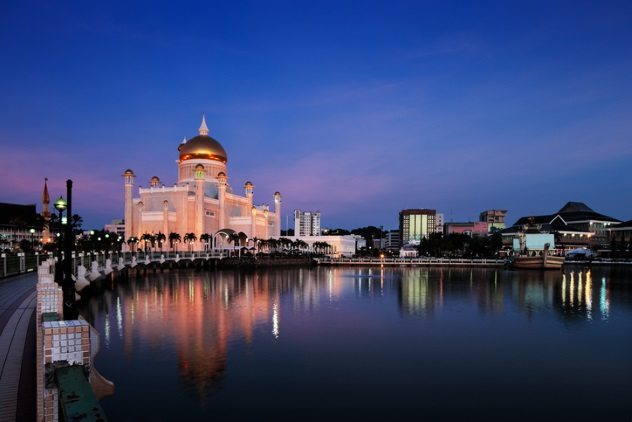
Brunei is known by some as the “Shellfare State,” and with good reason. This small, petroleum-rich Asian nation has been effectively bankrolled by the oil companies that operate within it. Brunei’s authoritarian leader, Sultan Bolkiah, was once one of the world’s richest men, but this wealth hasn’t come at the expense of his people—or at least, not too much. Bruneian citizens receive subsidies on everything from petrol to oil, and despite the fact that the Sultan spends millions of the public budget on his collection of luxury cars, Brunei has one of the highest GDPs per capita in the world.
One might assume then, that Brunei is about as close to a perfect country to live in as you can get. With riches galore, palm-fringed beaches, and beautiful jungles covering the entire country, it would be fair at first glance to make that guess. However, Brunei’s unique situation also brings with it some rather unique problems. For example, the country is both one of the most obese in the region and one of the most repressive, as the vast network of generous subsidies and grants has effectively allowed the sultan to buy out the Bruneians’ right to freedom.[5] Uncensored media in the country is nonexistent, dissenters are arrested, and legislation is implemented with little regard for citizens. For example, a 2014 law promises jail time for such heinous crimes as celebrating Christmas.
While it is true that some Bruneians enjoy a high quality of life, more might if the country’s non-Muslim citizens, who make up a third of the population, were allowed to practice their religion freely. And while it is also true that the citizens are quite rich, they would undoubtedly be even more so were it not for the sultan’s notorious greed and nepotism—such as his siphoning of a grand $40 billion from state funds to pay off family debts.
6 Central African Republic
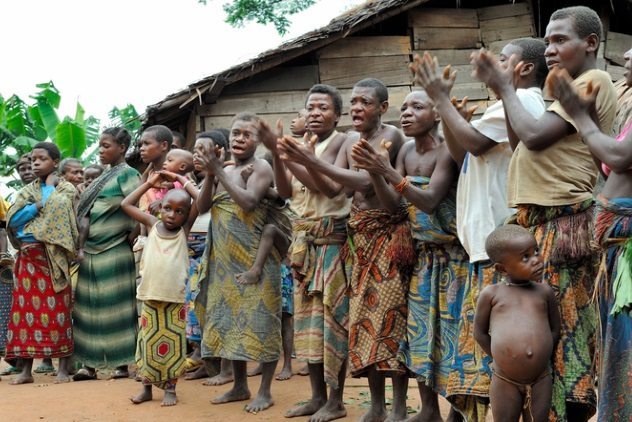
The Central African Republic’s name is a bit of a misnomer. It is central, and it is indeed African, but the CAR at the moment is less of a republic and more of a failed state. As with Somalia, the government controls little of the country outside of the capital, and much of the nation is run by various rebel groups. The CAR has also, much like Somalia, been in a state of quasi-perpetual civil war for over a decade.
The country’s problems, though, date back quite a bit further than the start of civil war. The first democratic leader of the CAR only lasted a few years before dying in a suspicious plane crash. From then on, the country spiraled into madness, first with the establishment of a one-party state and then with the overthrow of President David Dacko and the establishment of a Central African “Empire.” If anything could be worse than the old single-party state, it was this—a belief proven correct when the new “Emperor” Bokassa spent a third of the government budget on his coronation ceremony, completely bankrupting the country. Bokassa’s bizarre and violent reign—which included the criminalization of unemployment, the murder of hundreds of protesting schoolchildren, and alleged cannibalism—led to the deterioration of once-strong relations between the CAR and France, and Bokassa’s predecessor was restored to power following a French coup. Dacko was then re-overthrown, and the new ruler built an authoritarian state backed by a military junta.
Although democracy was eventually achieved in the 1990s, this did not signal the end of the CAR’s struggles. The first democratically elected president, Ange-Felix Patasse, deepened the conflicts between the country’s ethnic groups, allegedly carrying out “witch hunts” against the Yakoma people.[6] Three military mutinies occurred during only his first term, forcing foreign troops to be used to keep control and subdue the already angry population—showing exactly how the country was ripe for the civil war that broke out in 2003 and continues to ravage the country to this day.
5 East Timor
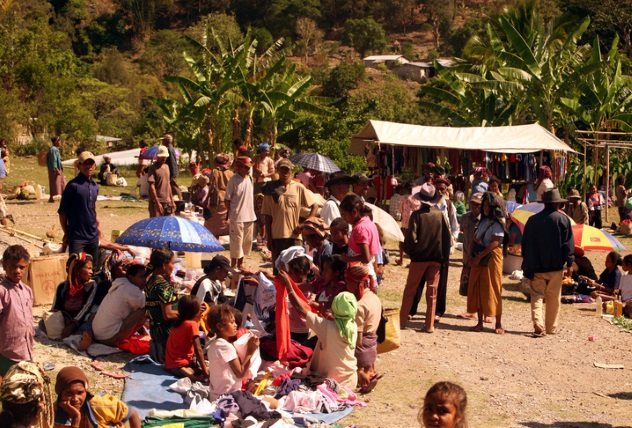
East Timor is one of the world’s most decidedly unlucky countries. First exploited and colonized by Portugal, the islanders fought valiantly for their independence and were finally granted it in 1975 after the Portuguese Revolution. It was very much a case of jumping out of the frying pan and into the fire, though, for as soon as independence was declared, neighboring Indonesia took advantage of the internal strife and disorder within the new country to invade it and declare it part of their own territory.[7]
One might assume that the invasion of a former colony might not be taken particularly kindly by the West, especially when said colony was right off the coast of Australia, one of the region’s most important powers. And said occupation led to massive human rights abuses and the killing of what some estimate to be up to a third of the East Timorese population. But many countries actually supported this occupation, at least at the start: Australia for the oil contracts they were offered by Indonesia and the US due to the communist nature of the FRETILIN independence movement, which would have inevitably formed a government in an independent East Timor.
It took until 1999 for enough pressure to be applied to Indonesia to agree to a referendum—in which, somewhat unsurprisingly, the vast majority of the population voted for independence. Before leaving the country, though, the Indonesian military made sure to kill a significant number of civilians and burn down all of the government buildings to guarantee the failure of any successor state. Although they may have tried, this goal was not particularly successful. While there has since been some strife within East Timor, including an assassination attempt on its leader, the situation within the country has improved drastically since the end of Indonesian occupation, particularly within the last few years, with quality of life for its citizens improving by almost every available measure. A success story at last!
4 Equatorial Guinea
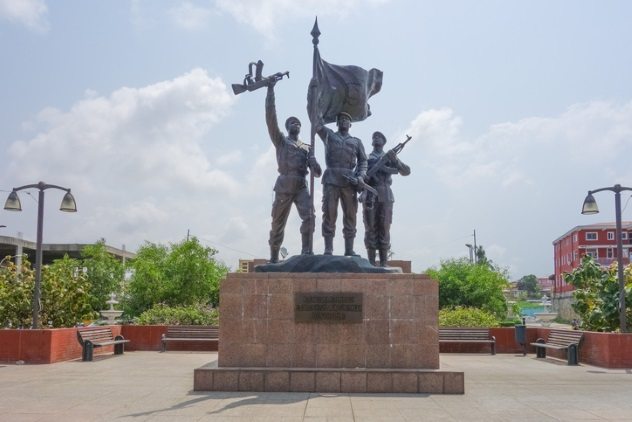
Equatorial Guinea is a unique country in many ways. It is, for example, the only Spanish-speaking nation in Africa, as a former colony of Spain. It is also the only state on the continent to have a capital not on its mainland but rather on a tiny island several hundred miles offshore. (No, really!) Somewhat less adorably, it also has the longest-serving leader in Africa: Teodoro Obiang, the epitome of a despotic strongman, whose rule has lasted almost 40 years.[8]
The country’s crazy history started as soon as it gained independence. After its break with Spain, the new leader, Macias Nguema, turned the country into a single-party state and made himself “President for Life”—perhaps foreshadowing what was to come. Nguema was quick to establish relationships with the world’s communist countries despite denouncing Marxism as “neo-colonialism” in Africa. Regardless of his self-declared “moral high ground,” he had no issue with murdering or sending into exile a third of the country’s population in one of the most horrific genocides in modern history. His political opponents were all executed, and the Equatoguinean economy collapsed thanks to the exodus or death of its skilled citizens. It speaks volumes that the country’s current dictator, who has been in charge since a 1979 coup, is still several orders of magnitude milder than the previous one.
Things after the coup started off well. Amnesty was granted to all political prisoners, the country’s gulag-style forced labor system was shut down, and Nguema was sentenced to death for crimes against humanity. However, the new leader, Obiang, who was also Nguema’s nephew, forgot to apologize for the fact that he had supervised many of the atrocities committed during his uncle’s regime. Furthermore, Equatorial Guinea’s new dictator wasn’t content with what had been a political stranglehold of the country and decided to implement an economic one, too. The policy of state kidnappings and murder of opposition continued unchecked, and the country also sold its oil, with the money going straight into presidential bank accounts—making Obiang one of the world’s wealthiest leaders to the tune of $600 million.
Despite the fact that the country has the highest GDP per capita in Africa, the vast majority of the population lives in abject poverty, and the nation made a name for itself by selecting its Olympic athletes almost entirely at random, including a swimmer who had “never seen a 50m pool before” and recorded the slowest time in Olympic history. There is little chance of change for the foreseeable future, though, as Obiang has bankrolled US support of his regime in return for cheap oil contracts and has more control over his tiny country than almost any other dictator in Africa.
3 Guinea-Bissau
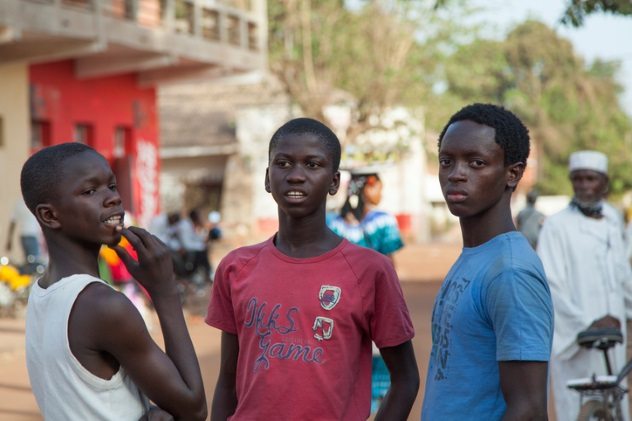
If one thing can be said about former Portuguese colonies, it’s that they have a rather worrying tendency to fall into the clutches of civil war. Guinea-Bissau is no exception to this rule. Following in the footsteps of Angola, Mozambique, and East Timor, this lusophone nation has also been ravaged by conflict. There is one difference, though, between Guinea-Bissau and the others: The country’s most stable years were paradoxically those immediately after independence.[9] It was also unique in that it managed to obtain independence before being given it peacefully by Portugal.
Helped by large quantities of arms from communist countries, the Marxist nationalist movement gained control of the country through a guerrilla war and broke away from Lisbon in 1973, a year before being recognized by the new Portuguese government. They ruled as a single-party state for a decade before finally making the transition to democracy and allowing multipartisan elections—which is, ironically, when the country started to collapse.
Only a few years after the first elections, a coup attempt triggered a civil war, which ravaged the country for a year and displaced hundreds of thousands of people. The war ended after the overthrow of President Vieira, and a new leader was elected a year later—but Vieira’s successor only lasted for three years himself before being overthrown in another military coup. Following the next election in 2005, Vieira was reelected as leader, but after several attempts on his life, he was finally assassinated in 2009 before the completion of his term. One might assume that the death of the last prewar leader in Guinea-Bissau would mark the end of the country’s political strife, but another coup occurred in 2012—meaning that in the 43 years since independence, no leader has managed to successfully complete their five-year term.
2 Turkmenistan
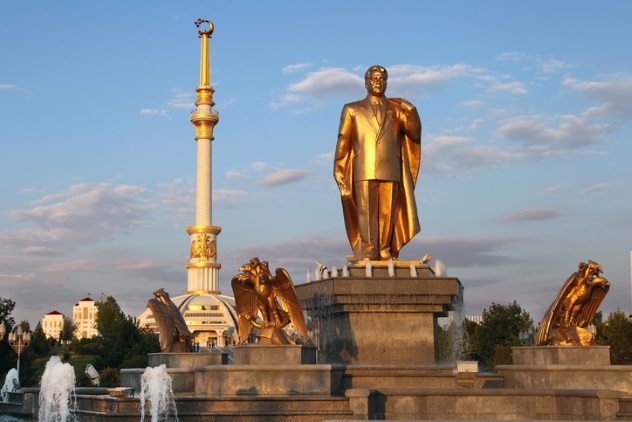
For a country whose closest living relative is probably North Korea, it is surprising how few people have heard of Turkmenistan. While it may be a crazy nation, it hasn’t always been this way. Unlike some of the countries on this list, Turkmenistan’s history is ancient and goes back over 1,000 years, yet the 20-odd years since independence from the Soviet Union have probably been more eventful than all of the rest put together.
Under Soviet rule, Turkmenistan was very much the quintessential Central Asian republic—underfunded, exploited, and oppressed by the government in Moscow and mainly left out from the liberalization and development that happened during the USSR’s later years. After the great split in 1991, though, Turkmenistan chose to follow quite a different path from its brethren. While it may today bear the hallmarks of an ex-Soviet state—namely corruption, nepotism at its finest, and inefficient government—none of the other Central Asian states have achieved this in quite the same way Turkmenistan has.
After independence, the then-leader of the country, Saparmurat Niyazov, figured that the best way to fill the leadership void would be to become a Stalin-style cult figure. Millions were spent on gold statues of him, and knowledge of his books even became compulsory for those trying to get a driver’s license. Niyazov also banned a lot of things on his own whims, such as chewing tobacco, lip-syncing, dogs, facial hair, video games, and even ballet, which was deemed “not Turkmen enough.” While this may seem comical, thousands in Turkmenistan have died due to Niyazov’s various failed policies, and the self-styled “President for Life” is estimated to have funneled billions of dollars of state revenue into private bank accounts.
Is there hope, then, for Turkmenistan? As the country’s citizens have essentially traded their rights for the electricity, water, and natural gas they receive for free—and that their government is one of the world’s most authoritarian, second only to a few such as North Korea—one would have to assume that protests would be unlikely. There may have been a spark of hope after the death of Niyazov in 2006, after which his former dentist became president, and this spark may even have ignited something after all the golden statues of the former president for life were taken down. This was quickly dashed, though, when it turned out they were just being replaced by even larger and more expensive statues of the new leader—showing that it’s very much the same story, different pen, for Turkmenistan.[10]
1 Paraguay
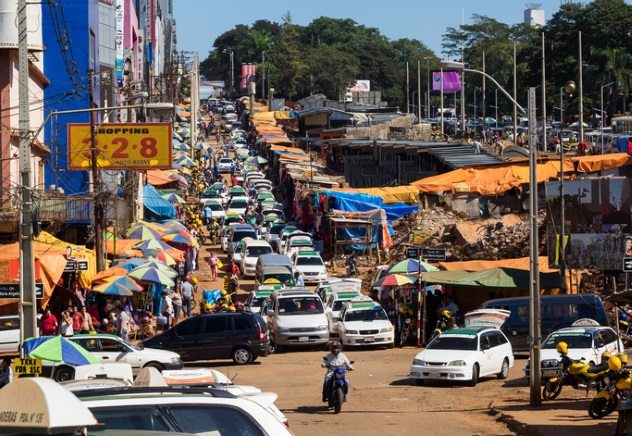
If there was ever to be an all-important rule for leading a country, it would be to not declare war on countries 20 times the size of yours. Leaders who fall foul of this generally end up in a pretty bad state, and one of these was Paraguay’s dictator, Francisco Solano Lopez. At the time, Paraguay hadn’t been a country for very long, but Lopez seemed determined to end its existence before it even started by declaring war on Uruguay, Argentina, and, incredibly, Brazil in 1864. As one might expect, this didn’t go too well—and only half a century after independence, two-thirds of the population (by some estimates) had already been wiped out.
The country, perhaps predictably, continued to be somewhat unstable, chewing up and spitting out a grand total of 31 leaders throughout the first half of the 20th century, most removed by a coup. It also started another war to reclaim the territory it had lost during the first one, only this time, it picked on a slightly easier opponent in the form of Bolivia, so Paraguay actually won. The country’s political instability ended, however, after a coup following the country’s civil war, from which strongman Alfredo Stroessner emerged as leader.
One might assume that some stability, the first since its independence, would do Paraguay some good, but Stroessner’s regime was among the worst in South America for its human rights and liberties—which, considering some of the other governments in the region at the time, is quite something. Thousands died for opposing Stroessner’s regime, and extrajudicial kidnappings became the norm.[11] Stroessner’s staunch anti-communism meant that he had the support of other Latin American dictators and, most importantly, the US, which allowed him to hold power until 1989, when he was finally overthrown in a military coup. Besides the impeachment of two presidents since, most recently in 2012, the country has shown a bunch of positive changes, so while it still may not be perfect, there is hope for stability in Paraguay after all!
For more information on countries you never hear about, check out 10 Secret Countries You’ve Probably Never Heard Of and 10 Wannabe European Countries You Might Not Have Heard Of.








